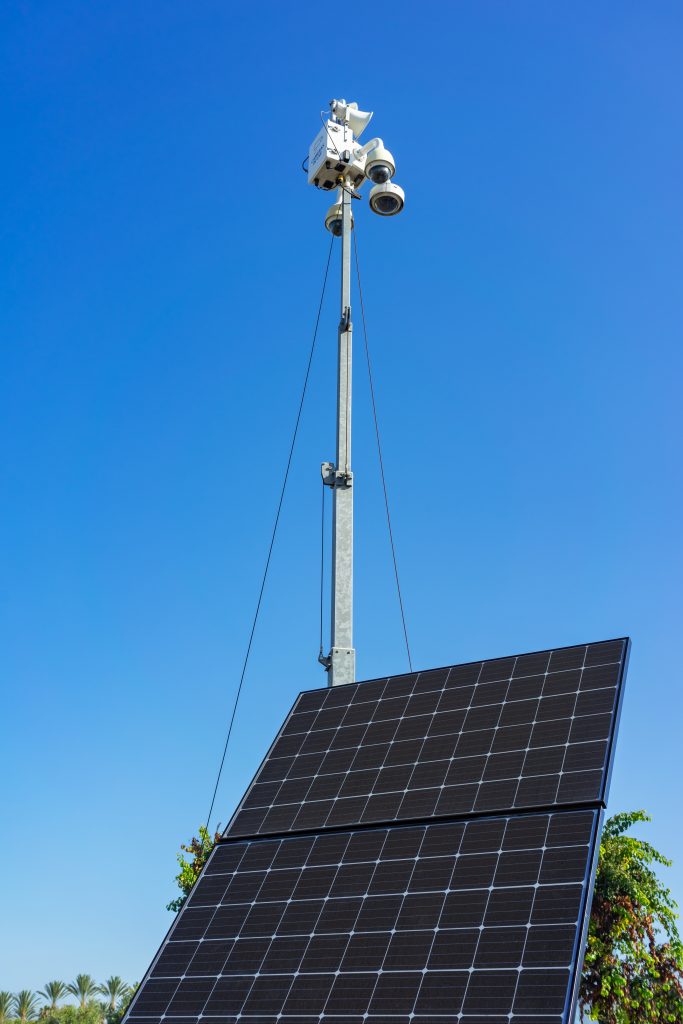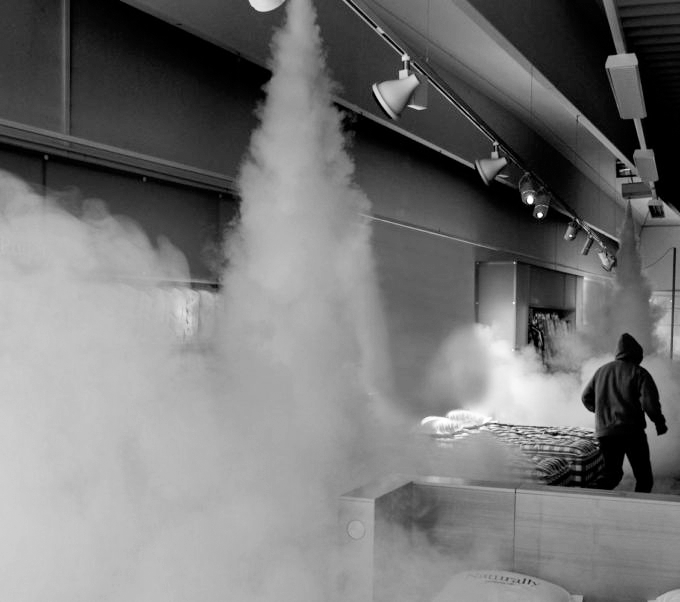In today’s security-conscious world, video surveillance is a crucial element in protecting businesses of all sizes. With technological advancements like CCTV and IP camera systems, businesses can monitor their environments more effectively, reduce theft, and gather critical evidence for investigations. These systems not only serve as a deterrent against criminal activity but also provide valuable insights into daily operations.
This article will explore the importance of video surveillance for businesses, the benefits of using IP cameras, and the cutting-edge features—such as video analytics, motion detection, and remote viewing—that make these systems more effective than ever.
The Importance of Video Surveillance for Business
Security
Video surveillance plays a central role in business security by providing continuous monitoring of key areas, ensuring the safety of employees, customers, and assets. A well-implemented surveillance system acts as both a preventive measure and a tool for post-incident analysis.
Key Benefits of Video Surveillance:
- Crime Deterrence: Visible security cameras act as a deterrent to potential
criminals. The knowledge that their actions are being recorded reduces the
likelihood of theft, vandalism, or unauthorised access. - Evidence Collection: In the event of a security breach, video footage provides concrete evidence that can be used in investigations, insurance claims, and even legal proceedings. High-definition footage can help identify individuals involved in suspicious activities.
- Employee Safety: Cameras placed in areas like parking lots, entrances, and other common spaces provide added safety for employees, reducing the risk of workplace violence, harassment, or accidents.
- Compliance and Accountability: For industries that require strict compliance with safety or legal regulations, video surveillance helps ensure protocols are followed, and footage can be reviewed to verify adherence to safety standards.
Surveillance systems also provide business owners and managers with peace of mind, knowing that their operations are being monitored at all times, even after working hours.
Transition from CCTV to Modern IP Camera Systems
Traditional CCTV systems have been a mainstay of business security for decades, providing businesses with closed-circuit monitoring that records footage locally. However, advancements in technology have led to the development of IP (Internet Protocol) camera systems, which offer more flexibility, improved video quality, and smarter security features.
Why IP Camera Systems Are Superior:
- High-Definition Video: Unlike older CCTV systems that often produce grainy footage, modern IP cameras provide high-definition (HD) and even 4K resolution video, making it easier to identify faces, license plates, and other critical details.
- Scalability: IP camera systems are highly scalable, allowing businesses to easily add or remove cameras as their needs change. This is especially useful for growing companies or those with multiple locations.
- Remote Access: One of the key advantages of IP cameras is that they are
connected to the internet, allowing business owners and security personnel
to access live feeds and recorded footage remotely from any device with internet access. - Cloud Storage: Instead of relying on local storage devices, many IP camera
systems support cloud-based storage, which offers enhanced security,
accessibility, and the ability to store larger amounts of footage for
extended periods. - Cost-Effectiveness:
While IP cameras may have a higher upfront cost, their flexibility, ease of installation, and lower maintenance costs often make them more economical in the long run.
As more businesses move toward IP-based surveillance systems, they benefit from improved functionality and more sophisticated security capabilities.
Video Analytics: The Future of Smart Surveillance
A major advancement in modern video surveillance is the integration of video analytics—a technology that uses artificial intelligence (AI) to analyse video footage in real time. Video analytics enhances business security by automating certain tasks and providing actionable insights.
Key Features of Video Analytics:
- Motion Detection: Instead of continuously recording footage, video analytics can trigger recording or alerts when movement is detected in a designated area. This reduces the amount of unnecessary footage and focuses on significant events.
- Facial Recognition: Some video analytics systems can recognise and identify
individuals based on their facial features. This feature is useful for restricting access to sensitive areas, identifying known criminals, or enhancing customer experiences in retail environments. - Intrusion Detection: Video analytics can detect when an unauthorised person enters a restricted area and immediately trigger an alarm or notify security personnel.
- People Counting and Heat Mapping: For businesses that rely on customer
traffic, such as retail stores, video analytics can count the number of people entering or exiting and create heat maps showing the most popular areas. This information helps businesses optimise staffing, layout, and marketing efforts.
By automating the process of monitoring and analysing surveillance footage, video analytics reduces the workload on security teams while ensuring that critical events are identified and responded to in real time.
Motion Detection for Enhanced Security
Motion detection is one of the most valuable features in modern video surveillance systems. It allows businesses to focus their security efforts on significant events, saving both storage space and time when reviewing footage.
How Motion Detection Works:
Motion detection technology uses sensors to detect changes
in the field of view. When motion is detected, the system can:
- Trigger recording, so footage is only captured when movement is present.
- Send immediate alerts to security personnel or business owners, allowing them to respond quickly.
- Activate other security measures, such as turning on lights or locking doors, to further protect the area.
Benefits of Motion Detection:
- Reduced Storage Costs: By only recording when motion is detected, businesses save on storage space, making it easier to archive and manage video footage.
- Timely Alerts: Instant notifications ensure that security personnel are aware of any suspicious activities in real time, enabling a quicker response.
- Versatile Application: Motion detection can be used indoors and outdoors, making it suitable for monitoring everything from office hallways to parking lots.
For businesses with large areas to monitor, motion detection is an essential feature that ensures security without overwhelming staff with unnecessary data.
Remote Viewing for Total Control
One of the most convenient features of modern IP camera systems is the ability to remotely view live and recorded video footage from anywhere with an internet connection. Whether you’re at home, traveling, or managing multiple locations, remote viewing puts control in the hands of business owners and security managers.
How Remote Viewing Works:
IP cameras connect to a network, allowing authorized users to access video feeds through a secure app or web portal. From these devices, users can:
- Watch live video from any connected camera in real time.
- Review recorded footage stored on the cloud or local server.
- Control camera settings, such as adjusting angles, zooming in, or switching
between night and day modes.
Benefits of Remote Viewing:
- Real-Time Monitoring: Remote viewing enables business owners to keep an eye on their property from anywhere, ensuring that security is maintained even when they are off-site.
- Immediate Response: If an alert is triggered, business owners or security staff can view the incident remotely and take appropriate action, such as contacting the police or security personnel.
- Multiple Location Management: For businesses with multiple locations, remote viewing allows centralised control over all camera systems, simplifying security management.
By providing flexibility and accessibility, remote viewing ensures that businesses can maintain security and respond to incidents in a timely and effective manner, no matter where they are.
The role of video surveillance in business security is more crucial than ever. With modern IP cameras, video analytics, motion detection, and remote viewing, businesses can monitor their premises with unprecedented accuracy and efficiency. These systems not only deter criminal activity but also provide valuable evidence for investigations, improve employee safety, and offer insights into daily operations.
Investing in a robust video surveillance system is a proactive step toward safeguarding your business, assets, and employees. As technology continues to evolve, businesses that embrace these innovations will benefit from a more secure and intelligent environment.


